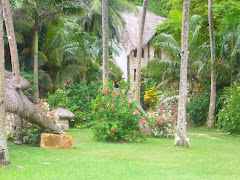With islands scattered across the Indian Ocean the Seychelles Islands offer diverse and impressive diving opportunities.
The ‘Inner’ Islands which are essentially a submerged mountain range, rest on a shallow plateau with prolific marine life and excellent PADI diving facilities available to access a multitude of dive sites.
The ‘Outer’ Islands to the south of the archipelago are all coralline or sand cays and mainly uninhabited, presenting the experienced diver with excellent opportunities to explore where few have gone before.
Inner Islands
The diving in this area is very diverse and includes both true coral reefs and the impressive granite reef formations that the Inner Islands are renowned for.There are a number of world recognised dive sites, such as the Ennerdale Wreck and Brissare rocks as well as the lesser known, more remote but even more spectacular sites around Marianne, The Sisters, Aride, Trompeuse and other islands. Some of the more remote locations are only accessible by live-aboard charter dive boats.The different islands each have their own special sites. All the northerly islands offer impressive granite reef locations where the sculptured rocks are covered with soft corals and sponges and fish life is prolific, due to the archipelago's isolation and also strict conservation rules.Wreck dives are available in some areas but only the islands to the south have wall dives, drop-off dives and drift diving opportunities as well.Dive depths vary, ranging from 8 to 20 metres for inshore sites and up to beyond 30 metres for dives offshore. All dives are run as non-decompression dives.
Outer Islands
The Outer Islands offer exciting and diverse diving experiences off numerous coral atolls and sand cays. The little-visited sites of these remote islands are accessed mainly by live-aboard charter yacht but there are also two dive centres located on the island of Desroches, famous for its caves and canyons, and also on Alphonse.Impressive dive sites are also found at the St. Joseph atoll in the Amirantes group and especially at the remoter islands of Astove, Cosmoledo and the legendary Aldabra, famous for the thrilling drift dive through the pass of its giant lagoon.‘Outer Island’ diving is rich and varied, featuring everything from mini-walls and canyons to migrating Manta Rays, numerous wreck sites and some of the finest Gorgonian fans in the Indian Ocean.Diving on Aldabra's terraced walls is dramatic and Green Turtles are common both in water and on their habitual pilgrimages up the beach to nest.Cosmoledo Atoll offers huge hard coral bommies with 3 metre gorgonian fans and massive barrel sponges all under the watchful guard of inquisitive Potato Bass!Astove’s settlement reef presents another awe-inspiring wall dive whose reef top is incised with crevasses and caves and boasts a large resident Green Turtle population.
Seasons & Conditions
Diving in Seychelles is possible all year round but is governed by an island's position and the prevailing winds.Generally speaking, the best conditions in both the Outer and Inner Islands are in the calm periods, April / May and October / November, when the water temperature can rise to 29ºC and visibility often over 30 metres on offshore sites.
In December and January, the north-west winds blow but conditions remain much the same as in the calm periods.
From May to September the winds are stronger and south-easterly. Visibility and temperature may drop during August and a wet suit of at least 4mm is necessary.
The more southerly Outer Islands – some of which are in fact closer to mainland Africa than the Inner Islands – are near the cyclone belt and during December and January they can experience extremely rough conditions on occasion.A 4mm shorty wetsuit is the minimum protection recommended for the outer islands.
Islands with big drop-offs and walls often have marked thermoclines with temperatures ranging from 19 to 27ºC and a full suit is an advantage for most divers.
Whale Sharks
Whale Sharks, those gentle giants of the ocean, are common visitors to Seychelles waters between October and April when it is often possible to swim with them.The Shark Research Institute runs a Whale Shark Monitoring Programme in conjunction with some local dive centres whereby clients can assist in ongoing research into the behaviour of these spectacular creatures, swim and snorkel with the giants and participate in photo safaris and tagging exercises.
Seychelles-Easy Free Travel Tips,You Tube videos of the Seychelles,Current events in the Seychelles and more.
Mahe Seychelles

Cap Lazare
Topics
- air seychelles discounts (3)
- Brad Pitt (1)
- cheap holiday (1)
- development (1)
- director for tourism marketing (1)
- easy (1)
- environment (1)
- flowers (1)
- free tips (1)
- free travel tips (1)
- honeymoon (1)
- Jennifer Aniston (1)
- new york times (1)
- North Island (1)
- plants (1)
- reuters (1)
- seychelles (12)
- seychelles flights specials (1)
- seychelles flowers (1)
- seychelles health (1)
- seychelles holiday (3)
- seychelles honeymoon (1)
- seychelles nature (1)
- seychelles plants (1)
- seychelles post office (1)
- seychelles postal rates (1)
- seychelles self catering (1)
- seychelles things to do (1)
- seychelles tourism (1)
- seychelles travel (10)
- seychelles travel.seychelles diving (1)
- seychelles trees (1)
- seychelles wedding (1)
- stamps (1)
- travel tips (1)
- trees (1)
- USA (1)
- USA tourism (1)
- wedding (1)

Kids at Anse a la Mouche
Praslin Seychelles

Anse Lazio




No comments:
Post a Comment